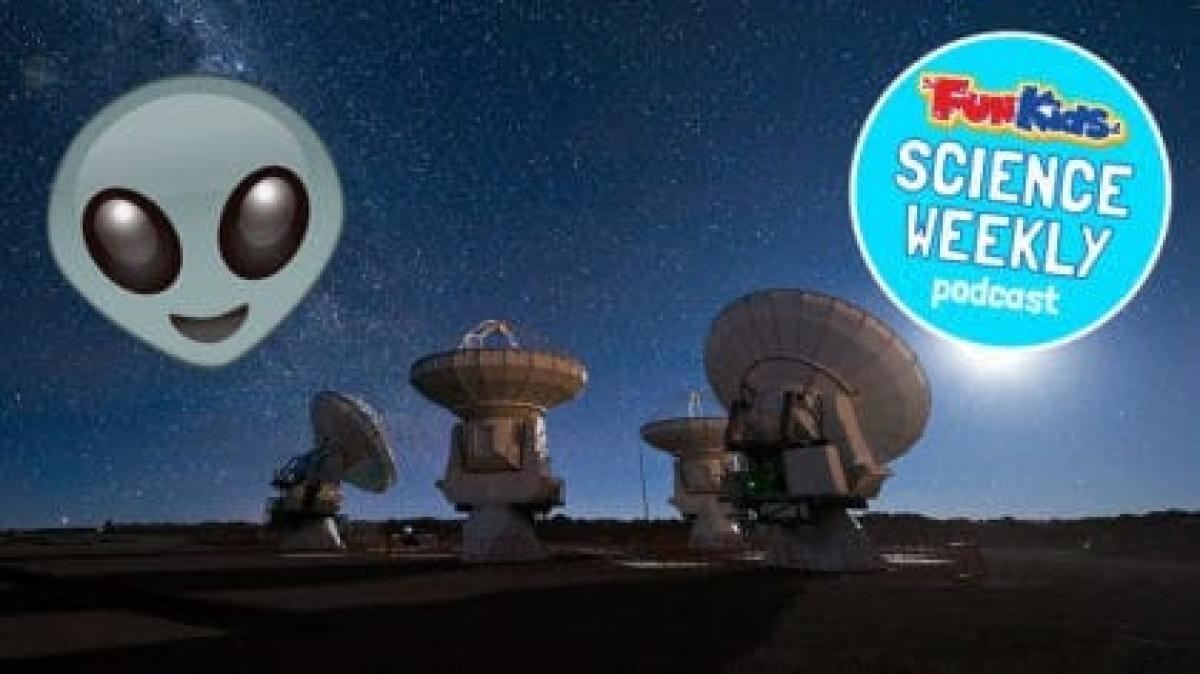Have you ever wondered whether we’re alone in the universe?
Could there be life out there that we don’t know about yet – and if so how can we say hello?
Sarah Scoles is a science writer and the author of Making Contact – a book about searching for extra terrestrial life. Dan spoke to Sarah for our Fun Kids Science Weekly podcast to find out exactly how we look for aliens!
The Fun Kids Science Weekly is our brand-new podcast hosted by Dan, taking a look at the weirdest and coolest stuff in science every week!
You can download it for FREE to your phone or tablet – and listen to it when you’re out and about!
So what are we looking for?
When scientists are searching for extraterrestrial life, the first thing they’re doing is looking for planets like Earth.
It makes sense really – Earth is great for us. There’s plenty of water, air for us to breathe, it’s not boiling hot…
So if there are planets with similar conditions, there’s a chance that life might exist.
To start with, that means ones that actually have solid ground!
A gas planet like Jupiter wouldn’t be ideal for us so might not be for aliens either. We’re looking for planets where aliens could stand or swim.
All living things on Earth need some water to survive. So if there’s life (as we know it) somewhere out there, they probably need water too.
So experts are also looking for planets where there’s water but the search hasn’t been that successful yet. At the moment, Earth is the only planet known to have lots of liquid water on the surface.
Could aliens find us?
The universe is huge and so far we’ve only exploring a very, very, very, very, VERY tiny part of it.
If there are aliens way out there, they might not know we exist – just like we don’t know if they exist!
So to make it easier for extraterrestrial life to find us, we’re sending out powerful transmissions that can be picked up across the galaxies.
It’s kind of like how you can listen to Fun Kids. There’s transmitters beaming out Fun Kids across the UK and, if you’ve got a digital radio, you can pick up the signal.
As well as beaming out a signal, waiting for someone to pick up the message, we’re looking for signals coming from other planets too that could be aliens trying to get in touch.
There are giant listening devices dotted around the Earth that are ready to pick up any sort of signal. If you think about the Fun Kids example again, these listening devices are basically like giant radios.
These listening devices are paying close attention to stars near to us for any slight sign of life as well as searching the whole sky for much stronger transmissions.

We don’t know for definite that we’ll find life but with so many planets out there it’s definitely a possibility – and that means it’s worth looking!
If you want to find out more about searching for aliens, Sarah’s written a grown-up book called Making Contact: Jill Tarter and the Search for Extraterrestrial Intelligence.
Jill Tarter is the woman who started many of these search programmes – science experiments to try and find other life – in the 1970s and 80s and that are still going on today.
[amazon_link asins=’1681774410′ template=’ProductGrid’ store=’funkids-21′ marketplace=’UK’ link_id=’68808f81-7080-11e7-8cac-ab7cdc736c04′]
To hear more about more amazing science stories like this, get the free Fun Kids Science Weekly!
If you want to listen on the radio instead, you can hear the Fun Kids Science Weekly every Saturday afternoon at 2pm on Fun Kids.
Add a comment



